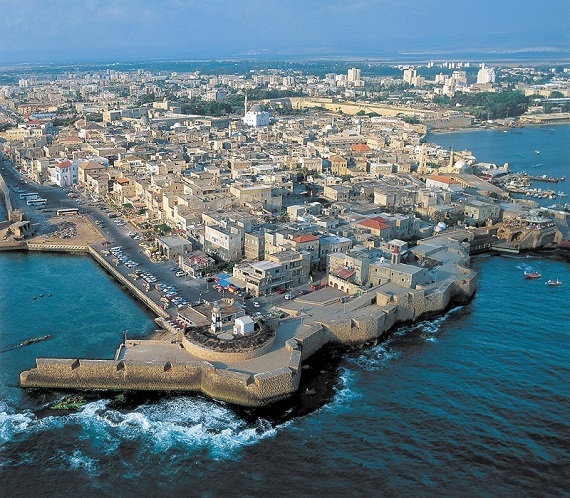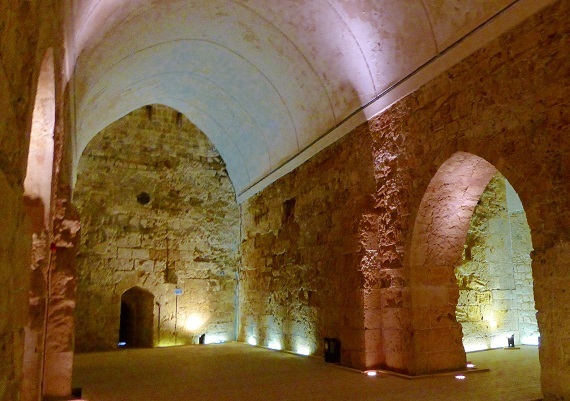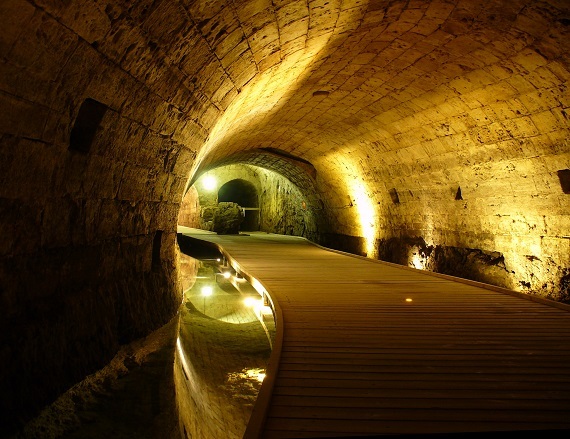Memo to visitors to Israel: If you get a chance, don't miss the crusader fort at Acre, a ride of about an hour and a half from Jerusalem. You'll spot it on the map (it's alternately called Akko) a little north of Haifa on the Mediterranean coast. To understand what you'll see there, here's a short history of the port - starting with a meeting in the 11th century thousands of miles away.
Nov. 27, 1095, was a red letter day in medieval history. Actually, it was a red cross day, that symbol having been proclaimed by Pope Urban II as the icon of a planned crusade to retake the Holy Land from its Muslim invaders.
Speaking at the Council of Clermont -- a meeting of hundreds of clerics, noblemen and onlookers in southern France -- the Pope hoped to recruit fighters with this pitch: "Here (you) are poor and miserable sinners; there, (you) will be rich and happy. Let none hesitate; (you) must march next summer. God wills it."
So in the fall of 1096 a crusader army of tens of thousands of knights, vassals and serfs went charging off to the Holy Land using "God wills it" as their battle cry. Three years later, after slashing their way across Europe, Constantinople and the Mediterranean coast of the Holy Land, the Christian forces not only took the city of Jerusalem but went on to create the Kingdom of Jerusalem - a 360-mile-long strip of land stretching from Lebanon south through modern-day Israel and western Jordan down to the Gulf of Aqaba - among several crusader states.
Fast-forward two centuries, through seven more major crusades (and several smaller ones) and many more battles. During this period Muslim armies recapture the Kingdom of Jerusalem, then lose part of it again during the Third Crusade led by King Richard the Lionheart. The crusaders carve out another kingdom, but fail to take Jerusalem. Instead, they build a new capital at the Mediterranean port of Acre.
But things go south for the crusaders again, and by the late 13th century the conquest of the Holy Land has pretty much fizzled out. The caped knights have been booted out of just about every place they took, and now they're down to their last "God wills it" stronghold -- at Acre, where the cross of the crusaders had been flying (on and off) since 1104.
The crusaders' last big holdout crumbled in 1291 when the flag of the Mamluk Sultan of Egypt was raised over Acre. Later on, the Ottomans captured the port and held on to it until the onset of World War I, when the Brits took over. The Union Jack flew over the port until the State of Israel was created in 1948.
Visitors to Acre will see the remains of all these cultures - and before them those of the Romans, Greeks and Canaanites, among others - in what's left of their walls, battlements, churches, mosques, baths and courtyards. Tours of the city typically wind up in an underground labyrinth of domed halls and walkways, once the home of monastic military orders such as the Knights Templars and the Knights Hospitallers.
Among subterranean eye-poppers awaiting tourists is a 1,150-foot-long stone tunnel used by the Templars as a protected passageway between the fortress and the port. Also featured down there is a commercial street that passed through the Hospitaller quarter, high-domed knight halls, a huge dining room and a central courtyard - all painstakingly restored to offer a jump back in time to the days when guys wandering around with crosses on their tunics ruled the roost around these parts.


